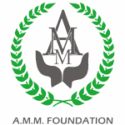Measured as the percentile of the waste re-sorted, handled and quantified as that which qualify as re-usable, repurpose-able, recyclable, and compostable – as against the total waste stream handled for the day.
- Acceptable Value – 40-80%
Averages
Intervening Variables
- Absenteeism, power outages, and machinery breakdowns
- Degree of Segregation
- Moisture Content
- Absenteeism
- Power outages and machinery breakdown
Confounding Variables
- High moisture content in feedstock
- Backlog Clearing of re-sorted material – recyclables which need to be baled before in particular – affects handling rates by altering end process weigment.
- Visual Volumetric Weighment of both inward and outward
Monthly Trend Since 2023
Recent 6-Month Trend
Recent 31-Day Trend
OBSERVATIONS
Yearly Trends
- As with KPI-6, performance again largely dependent on methodology of re-sorting – high whenever all combustable waste are designated as an Alternate Fuel Resource (AFR) to be used for energy capture – low when unsaleable plastics alone are designated as AFR – and the rest, such as textile waste, soiled unsaleable paper, and such – that can be safely subjected to closed high-temperature burning or composting, is disposed off onsite.
- The dip observed from Feb 2025 to April 2025 is attributed to the change in methodology wherein personnel had to adapt to the new norms defining designated recyclables and compostables.
Six Month Trend
- Trend since mid May largely satisfactory.
- The slight decline seen after May due to further reclassification of compostables.
31-Day Trend
- Trend stable and shows signs of stabilising.
Further improvement aimed at by additional automation, re-training, and by intensifying supervision.
31-Day Timeline of Variables












